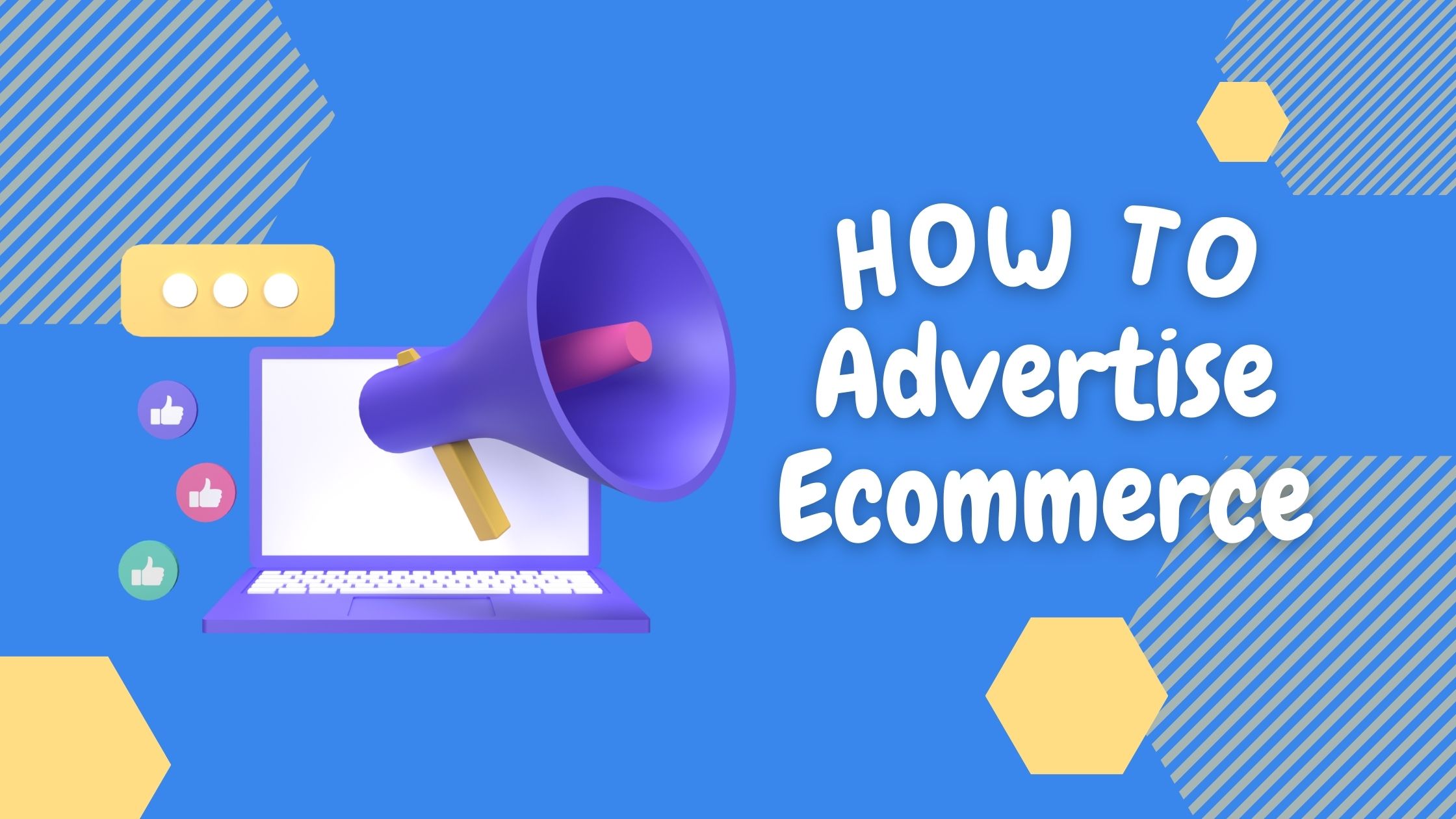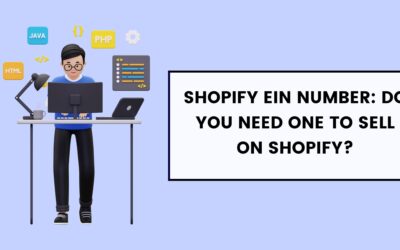How to Advertise Your Dropshipping Store: Strategies for Achieving Success in the E-commerce World
Welcome to the exciting world of dropshipping! A revolutionary business model where you can sell products directly to customers without holding any inventory. Sounds fascinating, right? It indeed is, but how do you let the world know about your unique dropshipping store? That’s where effective advertising strategies come into play.
Advertising your dropshipping store is the key to attracting potential customers and achieving success in the bustling e-commerce world. It’s not just about having the best products or the most user-friendly website. While these factors matter, without the right advertising strategy, your store might remain unnoticed in the crowded online marketplace.
Remember, advertising is more than just broadcasting your products. It’s about telling a compelling story that resonates with your audience, aligning your products with their needs, and establishing a strong online presence. Whether you’re a seasoned dropshipper looking to up your game or a beginner just starting your e-commerce journey, this guide will provide you with strategies to effectively advertise your dropshipping store. Let’s dive in!
The Essentials of Advertising for Your Dropshipping Store
In the realm of dropshipping, advertising is your golden ticket to visibility and growth. Why is that? Well, it’s simple: you could have the most innovative products and the most competitive prices, but without advertising, you’re like a needle in the digital haystack.
Let’s delve a little deeper. Dropshipping operates on a direct-to-consumer model, meaning you rely heavily on your relationship with your customers. Therefore, how you present your store and how you communicate your brand’s message matters significantly, and that’s where effective advertising comes into play.
Effective advertising does more than just promote products; it fosters relationships with potential customers. It helps you stand out from the crowd, highlighting what makes your store unique and why customers should choose you over countless others. It’s about aligning your offerings with the customers’ needs and wants, creating a narrative that resonates with them and compels them to engage with your store.
But here’s the catch: effective advertising isn’t about blindly putting out ads hoping something will stick. It requires well-thought-out strategies that align with your business goals, resonate with your target audience, and ultimately drive sales. The need for effective marketing strategies, therefore, becomes undeniable.
In the following sections, we will explore various advertising strategies suitable for your dropshipping store, helping you navigate the e-commerce landscape, and ultimately drive your success. Whether you’re interested in paid advertising, leveraging social media, or tapping into the power of SEO, we’ve got you covered! Stay tuned.
Building an Impactful Dropshipping Website
In the digital era, your website acts as your storefront – it’s where your potential customers will get their first impression of your business. Hence, having an appealing, user-friendly, and impactful website is vital to attract and retain customers in your dropshipping store.
Here are a few tips on creating a high-converting dropshipping website:
- Design Matters: Ensure your website’s design is aesthetically pleasing, easy to navigate, and aligns with your brand image. A cluttered, outdated site can deter customers, while a clean, modern layout can enhance user experience.
- Product Presentation: Make sure your product images are high-quality, and product descriptions are informative and engaging. This provides customers with necessary information and increases their confidence in purchasing.
- Mobile-Friendly: With more people shopping on mobile devices, it’s essential to have a mobile-responsive website. This ensures your site looks good and works well, no matter what device your customers are using.
- Loading Speed: A slow website can lead to high bounce rates. Make sure your website loads quickly to retain visitor’s interest.
- Easy Checkout Process: A complicated checkout process can lead to cart abandonment. Ensure your checkout process is straightforward and user-friendly.
- Clear Call-To-Action: Guide your visitors to take the desired action (like “Add to Cart” or “Buy Now”) with clear and compelling Call-to-Action buttons.
- Customer Testimonials and Reviews: Include customer testimonials and reviews on your website. It helps build trust and credibility, influencing potential customers to make a purchase.
- SEO Optimization: Optimize your website for search engines to improve your visibility and attract organic traffic.
Remember, your website is more than just a place to display products. It’s an essential tool for communicating with customers, promoting your brand, and driving sales. Therefore, investing time and resources into building a top-notch website can pay off significantly in your dropshipping advertising efforts.

SEO Content Marketing: A Must-Have Strategy
Search Engine Optimization (SEO) is a crucial cog in the digital marketing machinery. It is the process of optimizing your website and content to rank higher on search engine results pages (SERPs), enhancing visibility and driving organic traffic. SEO is particularly significant in dropshipping advertising, as it aids in attracting potential customers without resorting to expensive paid advertising methods.
Implementing SEO into your content marketing strategy not only boosts your website’s visibility but also enhances user experience, building trust, and credibility with your audience. Here are some tips on creating SEO optimized content for your dropshipping store:
- Keyword Research: Understanding what your potential customers are searching for is the first step in SEO. Use tools like Google Keyword Planner or SEMrush to identify relevant keywords related to your dropshipping products. Once you’ve identified these keywords, incorporate them into your content naturally.
- Quality Content: Write informative and engaging content that provides value to your readers. High-quality content is more likely to be shared and linked to, which can improve your SEO.
- On-Page Optimization: Make sure to use your keywords in the title, meta description, headers, and throughout the content. Also, remember to optimize images with alt tags.
- User Experience: Search engines favor websites that provide a great user experience. This includes factors like page load speed, mobile responsiveness, and easy navigation.
- Internal Linking: Linking your content to other relevant pages on your website can help search engines understand the structure of your site and can lead to higher rankings.
- Regular Updates: Keeping your content fresh and up-to-date is key. Regularly update your blog posts, product descriptions, and other content on your website.
- Content Promotion: Share your content on social media platforms, newsletters, and other relevant platforms. This can drive traffic back to your site and increase your content’s reach.
- Backlinks: Backlinks from high-authority sites can significantly boost your SEO. You can earn backlinks by creating valuable content, guest posting, or reaching out to influencers in your industry.
Implementing SEO content marketing may seem challenging, but the long-term benefits it provides in terms of organic reach and visibility are well worth the effort. With consistent effort and optimization, SEO can be a game-changer in advertising your dropshipping store.
The Power of Email Marketing in Dropshipping
Email marketing is a powerful tool in the world of e-commerce and dropshipping. It enables businesses to build direct, personalized connections with their audience, fostering relationships and driving conversions. Email marketing is not just about promoting products; it’s a way to engage with your customers, provide them with valuable content, and foster brand loyalty.
When executed effectively, email marketing can significantly boost your dropshipping store’s success. Here’s how:
- Builds Customer Relationships: Email marketing allows you to communicate directly with your customers. You can provide them with updates, promotions, and personalized offers, enhancing customer retention.
- Promotes Products Effectively: With segmented email lists, you can target specific groups of customers with tailored product recommendations, increasing the chances of conversion.
- Automates Follow-Ups: Automated emails, like cart abandonment reminders or post-purchase follow-ups, can nudge customers towards making a purchase or reengaging with your store.
- Drives Traffic: By linking your products and content within your emails, you can drive traffic back to your website, increasing the chances of a sale.
To unlock the full potential of email marketing for your dropshipping store, here are some key strategies:
- Segment Your Email List: Not all customers are the same. Segment your email list based on factors like purchase history, browsing behavior, and customer preferences. This allows you to send personalized emails that resonate with each segment.
- Design Responsive Emails: Ensure your emails look great on all devices. With a majority of people checking their emails on mobile devices, having responsive email designs is critical.
- Personalize Your Emails: Personalized emails have higher open rates. Use customer data to personalize email content, such as using the customer’s name in the subject line or offering product recommendations based on their browsing history.
- Implement Email Automation: Use email automation tools to send out timely emails like welcome emails, cart abandonment reminders, and re-engagement emails.
- Monitor and Optimize: Regularly track key metrics like open rates, click-through rates, and conversion rates. Use these insights to continuously optimize your email marketing strategy.
Leveraging the power of email marketing can not only help you advertise your dropshipping store effectively but also build long-lasting relationships with your customers. As a cost-effective and highly targeted strategy, email marketing should undoubtedly be a part of your advertising arsenal.
Leveraging Social Media for Your Dropshipping Store
Social media has become an integral part of advertising in today’s digital landscape. It offers a plethora of platforms where businesses can interact with customers, share content, and promote their products. For dropshipping stores, social media advertising provides a cost-effective and highly targeted way to reach potential customers and generate sales.
Choosing the right platform for your audience is the first step in your social media advertising strategy. Each platform comes with its unique user demographics, behaviors, and advertising formats. Here are some of the most popular platforms and how you can utilize them effectively:
- Facebook: As the largest social network, Facebook allows you to reach a broad audience. Its powerful targeting features allow you to reach specific demographics, making it ideal for promoting various dropshipping products. Facebook ads offer a range of formats, including photo ads, video ads, carousel ads, and dynamic ads.
- Instagram: Known for its high engagement rates, Instagram is a great platform for brands with visually appealing products. Instagram Ads can appear in the user’s feed or Stories, capturing their attention as they scroll. Collaborating with influencers on Instagram is also a great way to reach potential customers.
- Pinterest: Pinterest is the go-to platform for users seeking inspiration and ideas, making it perfect for lifestyle, fashion, home decor, and other similar product categories. Promoted Pins allow you to reach users who are actively looking to make a purchase.
- Twitter: While not as heavily used for ecommerce advertising as Facebook or Instagram, Twitter’s real-time nature makes it a good platform for promotions or sales. Twitter Ads can help you extend your reach and engage with a wider audience.
- LinkedIn: If you’re selling B2B products, LinkedIn is your platform. Sponsored Content, Message Ads, and Text Ads are some ways to reach out to professionals and business decision-makers.
- TikTok: TikTok’s short-form videos provide a unique and engaging way to showcase your products. With a largely younger demographic, it’s an excellent platform for targeting Gen Z and younger millennials.
Here are some general strategies to effectively advertise your dropshipping store on social media:
- Understand Your Audience: Know where your target audience spends their time online. Use demographic data to select the right platform(s) for your advertising efforts.
- Create Engaging Content: Social media users value high-quality, engaging content. Make sure your content is visually appealing, easy to understand, and aligns with your brand voice.
- Use Targeted Ads: Take advantage of the targeted advertising features offered by each platform. This will help you reach your ideal customers more effectively.
- Interact with Your Audience: Social media is about being social. Engage with your audience by responding to comments, asking questions, and being active on your chosen platforms.
- Monitor and Adjust: Regularly monitor your social media performance and adjust your strategy as needed.
Social media, when leveraged properly, can significantly boost the visibility and success of your dropshipping store. It’s all about choosing the right platforms, creating engaging content, and interacting effectively with your audience.

Joining Online Communities: A Gateway to Connect with Potential Customers
Online communities are forums, groups, and platforms where individuals with shared interests come together to discuss, collaborate, and share content. They can range from industry-specific professional groups on LinkedIn to niche hobbyist forums on Reddit or dedicated Facebook Groups. For dropshippers, these communities can be a goldmine for advertising, as they provide direct access to engaged, interested audiences.
Joining these communities can help you understand your target audience better, build brand awareness, increase traffic to your dropshipping store, and ultimately boost sales. But remember, these communities are not places for hard selling. Instead, they’re spaces for sharing value, fostering relationships, and subtly promoting your offerings.
Here are some tips on effectively engaging with online communities:
- Find the Right Communities: Look for communities where your target customers are likely to hang out. Are you selling craft supplies? Join crafting groups. Tech gadgets? Find tech forums or groups. Use platforms like Reddit, Facebook, LinkedIn, and even Instagram to discover relevant communities.
- Provide Value: Once you’ve joined, don’t just start promoting your products. Begin by offering valuable content to the community. This can be in the form of insightful comments, helpful advice, or even useful resources.
- Build Relationships: Interact with other members, respond to their posts, ask questions, and show genuine interest in the community. This helps establish trust and builds relationships with potential customers.
- Promote Subtly: After you’ve established yourself within the community, you can begin subtly promoting your products. This could be as simple as mentioning your product in response to a question or sharing a blog post from your website that includes your products.
- Respect Community Rules: Most online communities have rules, especially regarding self-promotion and advertising. Be sure to read and adhere to these rules to avoid being banned or developing a negative reputation.
- Monitor Your Reputation: Keep an eye on what’s being said about your brand in these communities. Address any negative comments professionally and promptly. Show appreciation for positive comments and testimonials.
By joining online communities relevant to your dropshipping business, you can build relationships with potential customers and establish your brand as an authority in your niche. Remember, the goal is to add value first and promote second. With this approach, these communities can become a powerful tool in your advertising strategy.
YouTube: The Underrated Advertising Platform
YouTube, with over 2 billion logged-in monthly users, is an advertising platform that’s often underestimated by dropshippers. The video-sharing platform is more than just an entertainment source; it’s a powerful tool for businesses looking to showcase their products in action, engage with their target audience, and boost their brand’s visibility.
So, why should dropshippers consider YouTube in their advertising strategy?
Product Demonstrations: YouTube is an excellent platform for demonstrating how your products work. You can create product review videos, unboxing videos, or tutorials showing your products in use. These types of videos can significantly enhance the perceived value of your products and provide potential customers with the information they need to make a purchase decision.
Increased Engagement: Videos are incredibly engaging. They have the power to hold a viewer’s attention longer than text or images. With YouTube, you have the opportunity to create content that can educate, entertain, and inspire viewers while subtly promoting your products.
SEO Benefits: YouTube is owned by Google, and as a result, YouTube videos often rank high in Google search results. By optimizing your video content with relevant keywords, you can improve your visibility on Google and drive more traffic to your dropshipping store.
Building Trust: Through consistent video content that adds value, you can foster trust and loyalty among your viewers, converting them into customers over time.
Affordable Advertising: YouTube also offers affordable advertising options like YouTube ads, which can be targeted based on user behavior, demographics, and interests.
Now, how can you effectively advertise your dropshipping store on YouTube? Here are some tips:
Create Quality Content: Ensure your videos are high quality, informative, and engaging. They should offer value to the viewer, whether it’s a product tutorial, a ‘how-to’ guide, or an entertaining unboxing video.
Optimize for SEO: Use keywords in your video titles, descriptions, and tags to improve visibility.
Create a Consistent Posting Schedule: Consistency is key on YouTube. Create a video uploading schedule and stick to it to keep your audience engaged and coming back for more.
Engage with Your Viewers: Respond to comments on your videos, ask for likes and shares, and encourage viewers to subscribe to your channel.
Promote Your Store: Include a link to your dropshipping store in the video description and mention it in the video where relevant.
By leveraging YouTube in your advertising strategy, you can create a more dynamic and engaging shopping experience, build a loyal following, and drive more traffic to your dropshipping store. Remember, creating valuable content is key to your success on this platform.

Alternatives to Traditional Advertising: Exploring New Avenues
In an era of information overload, traditional advertising methods can sometimes fall short. Ad fatigue, the rise of ad blockers, and the saturation of traditional advertising platforms have paved the way for innovative, non-conventional advertising avenues. As a dropshipper looking to carve out a niche in a competitive market, you may need to consider these alternatives to connect with your potential customers more effectively. Here’s how:
- Influencer Marketing: In the world of social media, influencers wield considerable power. Partnering with influencers whose follower base aligns with your target market can be an effective way to reach potential customers. Whether it’s Instagram, TikTok, or YouTube, choose influencers who resonate with your brand and can showcase your products authentically.
- Content Marketing: Instead of pushing salesy ads, provide value to your audience through quality content. This can take the form of blog posts, how-to guides, ebooks, infographics, podcasts, or videos. Content marketing helps establish your brand as an authority, builds trust with your audience, and improves your SEO – all while subtly promoting your products.
- Affiliate Marketing: Affiliates are like your brand’s ambassadors, promoting your products to their audience in exchange for a commission on sales made through their referral links. This method is cost-effective as you only pay for the successful transactions.
- Partnerships and Collaborations: Collaborate with other businesses or brands that complement your offerings. This can help you tap into their customer base, widening your reach.
- User-Generated Content (UGC): Encourage your customers to share their experiences with your products on social media. This not only generates free advertising but also boosts your credibility, as potential customers trust peer reviews more than brand-generated content.
- Community Engagement: Join forums, discussion boards, and social media groups related to your niche. Participate in discussions, provide value, and subtly promote your brand.
- Retargeting Campaigns: Reach out to users who have interacted with your website or ads before but haven’t made a purchase. Personalized emails or ads tailored to their interests can be an effective way to convert them into customers.
- Guerrilla Marketing: This involves unconventional, creative strategies intended to get maximum results from minimal resources. Think of viral social media challenges or eye-catching public installations.
These innovative advertising avenues are not just alternatives to traditional advertising; they are powerful strategies in their own right. By integrating these methods into your advertising approach, you can reach out to your target audience in a more personalized, engaging, and cost-effective way. Always remember that successful advertising is about more than just pushing a product; it’s about telling a story, building relationships, and creating value.
Wrap Up
Successfully advertising your dropshipping store is an art, combining a strategic blend of traditional methods and innovative strategies. This journey starts with the creation of a well-designed, high-converting website, which forms the backbone of your online presence. We’ve dived deep into the world of SEO content marketing, highlighting the significance of optimized content in reaching a larger audience and improving your store’s visibility on search engines.
We’ve also touched upon the power of email marketing, a tried-and-true method that, when done right, can foster stronger relationships with your customers, encourage repeat purchases, and significantly boost your store’s revenue. Then there’s the vast landscape of social media, a versatile platform for interacting directly with your potential customers, showcasing your products, and building your brand identity.
Community engagement, too, plays a crucial role in advertising your dropshipping store, helping you to build trust, glean valuable insights, and tap into potential customer bases. We’ve explored the benefits of leveraging YouTube, an underrated but impactful platform that allows for creative showcasing of your products while reaching a broad audience.
Furthermore, we’ve ventured beyond traditional advertising avenues, stressing the importance of thinking outside the box in today’s competitive e-commerce landscape. From influencer marketing to content marketing, affiliate partnerships, user-generated content, community engagement, retargeting campaigns, and guerrilla marketing, these alternative strategies can add depth and breadth to your advertising efforts.
In conclusion, advertising your dropshipping store is more than just shouting your brand name into the void. It’s a nuanced, multifaceted process that requires understanding your audience, crafting a compelling message, choosing the right channels, and constantly optimizing your strategies based on data and feedback. So take the plunge, implement these strategies, and watch as your dropshipping store not only survives, but thrives in the bustling e-commerce world. Your journey to success starts now!
5 Best Credit Cards for eCommerce: Score Big Savings and Get Rewards
5 Best Credit Cards for eCommerce: Score Big Savings and Get RewardsWhen you're running an...
Do I Need a Business License for Shopify?
Do I Need a Business License for Shopify?Do you need a business license to run a Shopify store? ...
Shopify EIN Number: Do You Need One to Sell on Shopify?
Shopify EIN Number: Do You Need One to Sell on Shopify?An Employer Identification Number (EIN) is...




